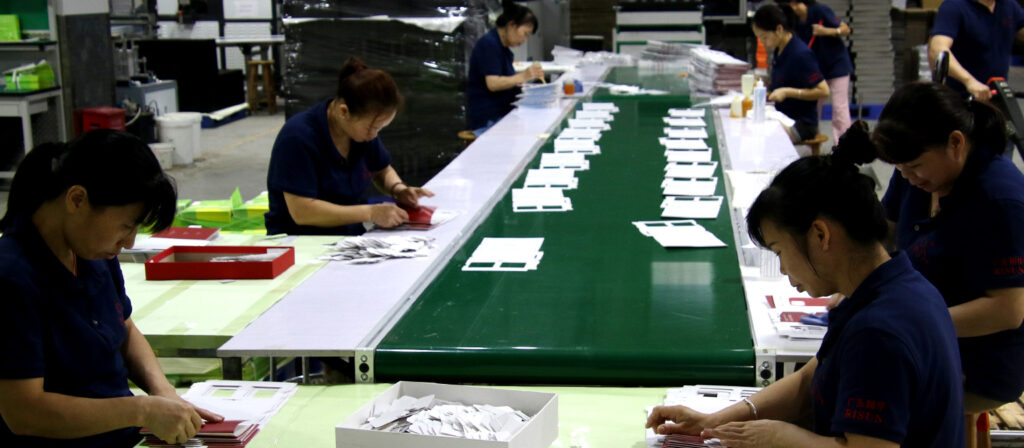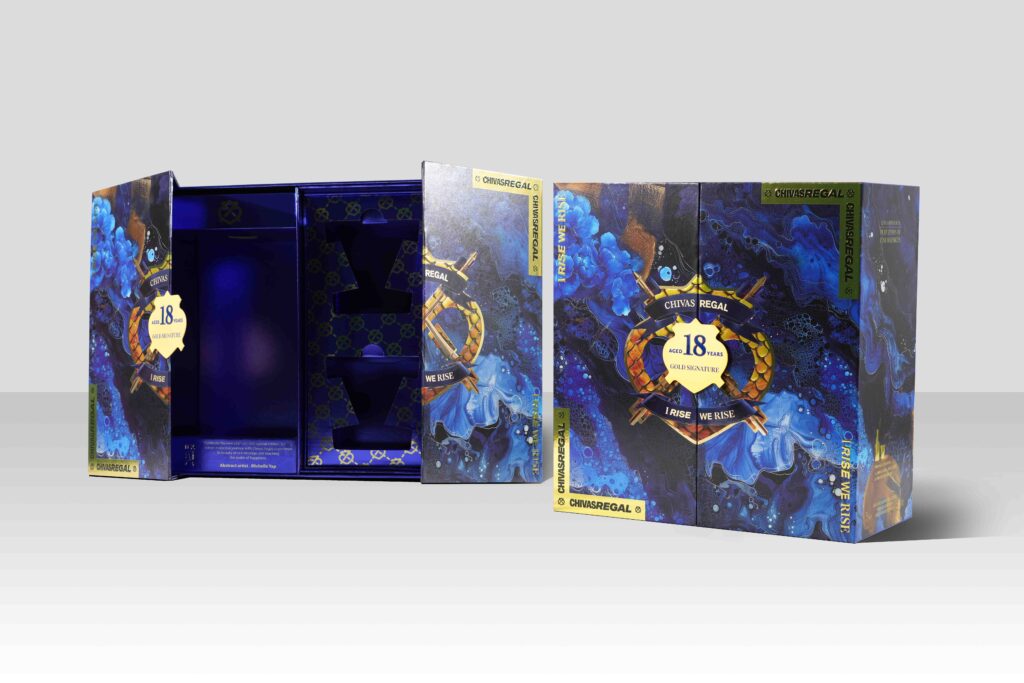Outline: The Silent Sales Force: Why Your Packaging Could Be Your Best Marketing Investment
1. Introduction
* The importance of packaging in modern business.
* Packaging as a reflection of brand identity and customer experience.
2. Packaging as the Brand’s First Ambassador
* Creating powerful first impressions with packaging.
* The role of unboxing in modern marketing and social media.
* Examples of packaging aligning with brand identities (luxury vs. innovative brands).
3. Strategic Packaging Choices That Drive Results
* The versatility of cardboard packaging.
* Packaging for fragile items: balancing protection and design.
* Apparel packaging as an extension of brand storytelling.
* E-commerce packaging challenges and solutions.
* Rigid boxes for premium products: luxury packaging.
4. The Business Impact of Smart Packaging Decisions
* Direct sales impact and correlation with quality packaging.
* How packaging reduces return rates and encourages repeat purchases.
* Strengthening brand identity through consistent packaging design.
* Enhancing customer experience through thoughtful packaging.
5. Design Excellence: Where Strategy Meets Creativity
* Understanding your target audience for effective packaging design.
* Color psychology and its impact on consumer behavior.
* Balancing customization with practicality and cost.
6. Advanced Strategies for Packaging Success
* Seasonal packaging adaptations for increased engagement.
* Sustainable packaging practices and their growing importance.
* Communicating sustainability through packaging design.
7. Budget-Conscious Quality Management
* Strategic ordering of packaging to optimize cost and quality.
* Long-term value thinking in packaging investment decisions.
* Shifting the perspective of packaging from cost to investment.
8. Measuring Packaging Success
* Key performance indicators for tracking packaging effectiveness.
* The importance of customer feedback in refining packaging design.
* Continuously improving packaging based on market changes and customer responses.
9. Conclusion
* Custom packaging as an impactful marketing investment.
* The lasting benefits of well-designed packaging for customer acquisition and brand loyalty.
Picture this: A customer receives two identical products. One arrives in a plain brown box, while the other comes wrapped in beautifully designed custom packaging with thoughtful details and premium finishes. Which product do you think creates a more positive impression? Which company seems more professional and trustworthy?

The answer is obvious, yet many businesses still treat packaging as an afterthought — a necessary expense to get products from point A to point B. This mindset is costing them sales, brand loyalty, and competitive advantage in ways they might never realize.
Your Package Is Your Brand’s First Ambassador
In our digital-first world, packaging serves as the bridge between online browsing and physical ownership. It’s often the first tangible interaction customers have with your brand, making those crucial first few seconds absolutely vital for setting expectations.
Creating powerful first impressions starts with understanding that generic packaging is essentially invisible. When customers receive a plain box, they’re focused solely on what’s inside. But when that same product arrives in custom packaging that reflects your brand’s personality, suddenly the entire experience becomes memorable. The box itself becomes part of the product story.
Consider how this plays out in real scenarios. A jewelry company using elegant rigid boxes with soft-touch finishes and embossed logos communicates luxury and attention to detail. Meanwhile, a tech startup using corrugated sheets with bold graphics and innovative opening mechanisms signals innovation and customer-first thinking. Both approaches are valid, but they’re strategically aligned with their respective brand identities.
The unboxing phenomenon has transformed packaging from functional necessity to marketing goldmine. Social media platforms are filled with unboxing videos and photos because the experience of opening a well-designed package creates genuine excitement. This isn’t just about aesthetics — it’s about psychology. When customers feel special about receiving your product, they’re more likely to share that positive emotion with their networks, essentially providing free advertising.
Smart businesses recognize that every package leaving their facility carries their reputation. Cardboard gift boxes that arrive damaged or poorly designed reflect poorly on the product inside, regardless of its actual quality. Conversely, products that might be considered ordinary can seem premium when presented in thoughtfully designed packaging.
Strategic Packaging Choices That Drive Results
Cardboard remains the versatile champion for good reason. Modern corrugated sheets offer impressive durability while remaining cost-effective and environmentally responsible. The key is understanding how to maximize cardboard’s potential through smart design choices.
For businesses shipping fragile items like cosmetics or electronics, the protective qualities of well-designed cardboard boxes can significantly reduce return rates due to damage. But protection is just the baseline — the real magic happens when you combine functionality with visual appeal. Custom cardboard gift boxes can be designed with specific dimensions that eliminate wasted space, reducing shipping costs while ensuring products arrive in perfect condition.
Apparel packaging presents unique opportunities for brand storytelling. Custom shirt boxes go far beyond simple protection — they’re an extension of your fashion brand’s aesthetic. Seasonal designs can create anticipation and collectibility. Imagine releasing limited-edition packaging for summer collections or creating special holiday-themed boxes that customers want to keep and reuse.
The size, style, and theme customization possibilities are virtually endless. A streetwear brand might opt for bold, graffiti-inspired designs on sturdy boxes, while a luxury clothing line could choose minimalist elegance with premium paper stocks and subtle embossing. The key is ensuring your packaging choices align with your target audience’s expectations and your brand’s positioning.
E-commerce businesses face particular packaging challenges that mailer boxes are uniquely positioned to solve. These boxes need to be lightweight to minimize shipping costs, durable enough to survive the shipping process, and visually appealing enough to create positive first impressions. The best mailer boxes achieve all three goals while reinforcing brand identity through consistent use of logos, colors, and design elements.
Rigid boxes represent the premium end of the packaging spectrum, ideal for high-value items like jewelry, watches, or luxury accessories. These boxes communicate quality and exclusivity, justifying higher price points and creating keepsake value that extends the brand relationship beyond the initial purchase.
The Business Impact of Smart Packaging Decisions
Direct sales correlation isn’t just theoretical — it’s measurable. Businesses that invest in quality packaging often see immediate impacts on their bottom line through multiple channels. First, attractive packaging can influence purchasing decisions at the point of sale, particularly in retail environments where products compete for attention on crowded shelves.
But the sales impact extends far beyond initial purchases. Well-designed packaging reduces return rates by ensuring products arrive safely and meet customer expectations. It also encourages repeat purchases by creating positive associations with the brand experience. When customers feel good about receiving your products, they’re more likely to order again and recommend your business to others.
Brand identity strengthening through packaging requires consistency and strategic thinking. Your packaging should use the same logos, colors, and design elements found across all other brand touchpoints. This creates a cohesive experience that builds trust and recognition over time.
The psychological impact of consistent branding shouldn’t be underestimated. When customers see your distinctive packaging, they should immediately recognize your brand and recall previous positive experiences. This visual consistency acts as a trust signal, particularly important for online businesses where customers can’t physically examine products before purchasing.
Customer experience enhancement through packaging involves creating moments of delight throughout the unboxing process. This might include personalized thank-you notes, QR codes linking to exclusive content, or clever packaging design that makes opening the box feel like unwrapping a gift.
These touches don’t have to be expensive to be effective. Sometimes simple additions like custom tissue paper, branded stickers, or thoughtfully designed insert cards can transform an ordinary delivery into a memorable experience that customers want to share with friends and social media followers.

Design Excellence: Where Strategy Meets Creativity
Understanding your audience is the foundation of effective packaging design. The same product might require completely different packaging approaches depending on the target demographic. Bold, colorful designs might resonate with younger consumers seeking fun and energy, while elegant, minimalist packaging could better serve luxury market segments that value sophistication and exclusivity.
This audience understanding should influence every design decision, from material choices to color schemes to typography. For example, if your target customers are environmentally conscious, showcasing eco-friendly materials and sustainable practices through your packaging design becomes a competitive advantage.
Color psychology in packaging goes deeper than simply choosing colors that look good together. Different colors trigger different emotional responses and purchasing behaviors. Understanding CMYK and PMS color schemes allows for precise reproduction across different packaging runs, ensuring brand consistency regardless of production volume or timeline.
Red can create urgency and excitement, perfect for limited-time offers or energetic brands. Blue conveys trust and reliability, ideal for financial services or health-related products. Green suggests natural and eco-friendly qualities, while black and gold communicate luxury and premium positioning. The key is choosing colors that align with your brand message and target audience expectations.
Customization strategies should balance creativity with practicality. The most visually stunning packaging in the world won’t help your business if it’s prohibitively expensive or doesn’t protect products adequately. Smart customization focuses on elements that deliver maximum impact for reasonable investment.
This might mean investing in premium finishes for visible surfaces while using standard materials for interior components. Or it could involve creating modular packaging systems that allow for seasonal variations without requiring complete redesigns. The goal is finding the sweet spot where creativity, الوظيفة, and budget constraints intersect.
Advanced Strategies for Packaging Success
Seasonal packaging adaptation creates opportunities for increased engagement and sales throughout the year. Rather than using the same packaging year-round, consider how different seasons, holidays, or special events might inspire variations in your packaging approach.
This strategy works particularly well for businesses with gift-giving potential. Custom cardboard gift boxes designed specifically for holidays, graduations, or other special occasions can command premium prices while creating emotional connections with customers. The key is planning these variations well in advance to ensure adequate production time and inventory management.
Sustainable packaging innovation has moved from nice-to-have to business necessity. Today’s consumers actively seek brands that demonstrate environmental responsibility, and packaging choices play a significant role in these perceptions. But sustainability doesn’t mean sacrificing quality or visual appeal.
Modern eco-friendly packaging options include recycled cardboard, مواد قابلة للتحلل, and water-based inks that maintain visual quality while reducing environmental impact. Some businesses are even incorporating plantable elements into their packaging, creating memorable experiences that align with sustainable values.
The sustainability message should be communicated clearly but not overwhelmingly. Subtle indicators like recycling symbols, brief sustainability statements, or QR codes linking to detailed environmental information can inform customers without cluttering the overall design.
Budget-Conscious Quality Management
Strategic quantity ordering can significantly impact both cost and quality outcomes. Understanding minimum order quantities, setup costs, and volume discounts helps businesses optimize their packaging investments. Sometimes it makes sense to order larger quantities to achieve better per-unit pricing, while other situations might call for smaller, more frequent orders to maintain flexibility.
The key is understanding your sales velocity and storage capabilities. Ordering too much packaging ties up capital and storage space, while ordering too little often results in higher per-unit costs and potential supply interruptions.
Long-term value thinking involves weighing immediate costs against ongoing benefits. While premium packaging might cost more upfront, it can generate higher sales, reduce returns, improve customer satisfaction, and strengthen brand positioning — all of which contribute to better long-term profitability.
This perspective shift helps businesses make packaging decisions based on return on investment rather than simple cost minimization. When packaging is viewed as a marketing investment rather than a necessary expense, decision-making becomes more strategic and results-oriented.
Measuring Packaging Success
Key performance indicators for packaging effectiveness should include both quantitative and qualitative metrics. Sales data, return rates, and customer acquisition costs provide measurable outcomes, while customer feedback, social media mentions, and brand perception surveys offer insights into packaging’s impact on brand relationships.
Tracking these metrics over time helps businesses understand which packaging elements drive the best results and where improvements might be needed. This data-driven approach ensures packaging investments continue delivering value as businesses grow and evolve.
Customer feedback integration should be an ongoing process rather than a one-time evaluation. Regular surveys, social media monitoring, and direct customer communication can reveal opportunities for packaging improvements that might not be obvious from internal perspectives.
The most successful businesses treat packaging as an iterative process, continuously refining their approach based on customer responses, market changes, and business growth. This mindset ensures packaging remains aligned with business objectives and customer expectations over time.
Custom packaging represents one of the most impactful investments businesses can make in their brand development and customer experience strategies. From cardboard gift boxes that create memorable unboxing moments to sophisticated shirt boxes that reinforce brand identity, thoughtfully designed packaging drives sales, builds loyalty, and differentiates brands in competitive markets. The businesses that recognize packaging’s strategic importance and invest accordingly will find themselves with significant advantages in customer acquisition, retention, and overall market positioning.

